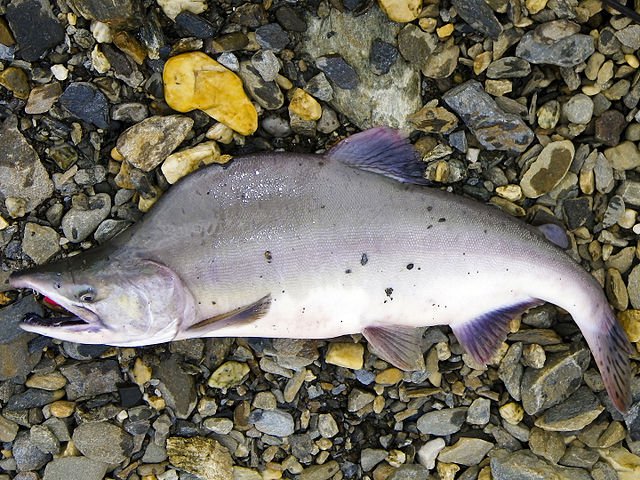Governor Bill Walker has officially requested that the federal government declare a disaster for four Alaska regions hurt by one of the poorest pink salmon returns in decades.
A pink salmon. Creative Commons photo by Bering Land Bridge National Preserve.In a Sept. 19 letter to U.S. Department of Commerce Secretary Penny Pritzker, Walker said fishery failures that occurred this summer at the Kodiak, Prince William Sound, Lower Cook Inlet and Chignik management areas are having a “significant impact on those who depend on the fishery for their livelihood” and asks for the “soonest possible review” due to the economic importance of these fisheries.
How bad were the humpy hauls?
At Kodiak, fishing remained closed during 70 percent of the pink salmon run and the catch of just 3.2 million was 28 percent of the expected harvest. The estimated value to fishermen, Walker wrote in his letter, is $2.21 million, compared to a five year average of $14.64 million.
At Prince William Sound the total pink catch of 12 million was more than 46 percent below the preseason forecast. The dockside value of $6.6 million compares to an average of nearly $44 million over the past five years.
The pink salmon catch of 97,000 at Lower Cook Inlet was 13 percent of the 759,000 forecast. That means a pay day of $78,000 for Inlet fishermen, who have averaged $501,000 in recent years.
Fishermen at Chignik did not even get any directed openers for pink salmon this summer. The 140,000 humpies taken during the region’s sockeye fishery were valued at $110,000, down from a five-year average of $740,000.
The pink salmon disaster declaration, should it occur, won’t set a precedent. Alaska received $20.8 million in federal money for fishery failures due to three years of low king salmon returns on the Yukon and Kuskokwim Rivers and in the Cook Inlet region.
The money was paid out in two installments over two years with an initial grant of $7.8 million divided among commercial fishermen. A second grant of $13 million was distributed as $4.5 million to the sport fishing sector, $7.5 million for research and restoration, and $700,000 was paid directly to Cook Inlet processors and salmon buyers who proved losses in income due to the fisheries failure.
“This is not going to be a blanket money grab for anybody who fished pinks. If you’re in the disaster area and the large portion of your income was based on pink salmon, then I believe you will be eligible,” said Representative Louise Stutes (R-Kodiak), who spearheaded the push for the pink disaster declaration.
Stutes said her office is now compiling the details of “time frames and the who’s and how’s” for people to apply for monetary payouts, should the move get a green light from the federal government.
Affected fishermen also can apply for a waiver of state loan payments for this year, to be tacked on to the end of the loan term.
A memo from Governor Walker directs the state Department of Economic Development to “commit as many resources as possible to assisting pink salmon fishery permit holders, and that review of individual loan payment waivers be expedited.”







